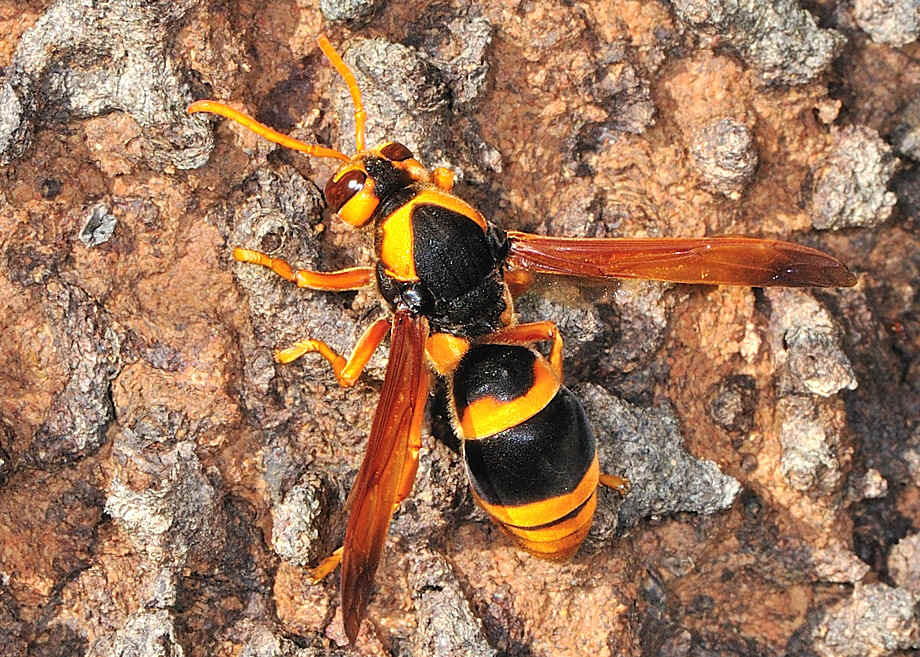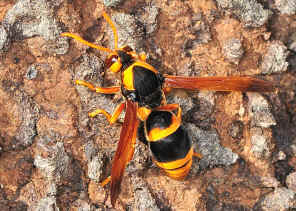Large Mud-nest Wasp II - Abispa splendida
FAMILY VESPIDAE
This page contains pictures and information about Large Mud-nesting Wasps that we found in the Brisbane area, Queensland, Australia. They are also known as Mason Wasps.

- Body length 25mm
- This wasp is large and with stout body. Its head, antenna and legs are yellow. Its thorax is black with yellow triangle shoulder. Its abdomen is segmented with yellow and black. This species is slightly smaller than the other Large Mud-nesting Wasp species that we found. We separated them by the darker head of this species.



- They are common in Brisbane. We often see them searching for caterpillars on leaves in gardens and bushes. They are importance in controlling the number of caterpillars in the wild. We noticed that Large Mud-nest Wasp likes to collect soil from termite mount.
Mud-nest
- Large Mud-nest Wasps build their nest inside large tree hole or under large rock.



- When the larvae are mature they pupate in their pot and emerge as a fully developed adult.


- On July 2010, we found a newly build mud-nest. We collected it home and keep it in a jar. We waited for two months and nothing happen, then we forgot about the jar............



- We looked at the jar about half a year later on Jan 2011. We found that six Large Mud-nesting Wasps and two Cuckoo Wasps already came out from the mud-nest some time ago. All of them were dead because of our ignorance. They were six large holes and two smaller holes on the nest.
- Cuckoo Wasps parasite on Eumeninae of Vespidae, include this Large Mud-nesting Wasp species. Check our Cuckoo Wasp pages for more information.
- In late winter 2004, we noticed a partly built Large Mud-nest Wasp nest inside a tree hole. After weeks, the nest remain the same. We knew the wasp had stopped building the nest for some reasons. We decided to collect the nest and see what would come out. We carefully removed the nest from the tree hole, however, we broke one cell. We saw a golden yellow pupa inside, 30mm in length. The pupa turn black and dead a few days later. We check that there should be another cell inside the nest. We keep the nest inside a covered jar.



- After three months later, a Large Mud-nest Wasp came out from the mud nest. It made a hole as the exit. We kept the wasp in the jar. We fed the wasp with some honey water. A week later, we believed no more interesting things will happen. We let the wasp flied away from our backyard. Of cause, we did it with caution for we know wasps will sting.
- They are large wasps and of course they will sting. However, we found that these wasps are not aggressive (some other wasp species are aggressive). Every time the wasps flied close to us, we kept motionless and they just circled a few times and flew away.
- Reference:
- 1. mason wasp Abispa splendida (Guérin) (Hymenoptera: Vespidae: Eumeninae) - PaDIL, Pests and Diseases Image Library, 2007.
